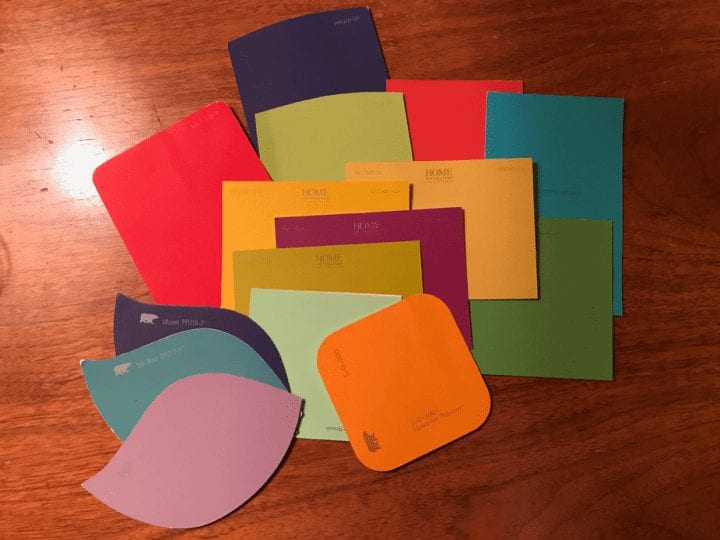
WITS Voices: There is More to Color
November 1, 2018
By Karen Finneyfrock, WITS Writer-in-Residence
Colors are evocative and emotional. Elementary age students love to talk about their favorite colors, their least favorite colors, the best colors and the most wretched ones. Discussions about colors can become heated! So when I bring in color samples from the hardware store and assign a color for each student to write about, I’m always ready for strong reactions.
I begin with the lovely poem “Mosquito” by Valerie Worth:
Mosquito
There is more
To a mosquito
Than her sting
Or the way she sings
In the ear:
There are her wings
As clear
As windows,
There are the sleek
Velvets on her back;
She bends six
Slender knees,
And her eye, that
Sees the swatter,
Glitters.
– Valerie Worth
We work together to identify the simile in the second stanza. We discuss other examples of simile. Then I pull out my box of colors. I introduce students to the idea of Synesthesia, (https://en.wikipedia.org/wiki/Synesthesia) the mixing of the senses. I tell them we are going to play with the idea of synesthesia by brainstorming together.
I start with a color, usually green, and I ask, “What does green sound like?” I give an example of my own to get us going. “To me, green sounds like a banjo being played on a porch in July.” Then, students start sharing their own ideas. We often start off slow with an something like, “Blue tastes like gum.” I encourage them to add more detail and things can turn silly and fun. “Blue tastes like bubblegum after school on my birthday.”
I like to end our brainstorming session by asking what a color looks like because sight tends to be the trickiest sense. I warn students that the toughest question can be, “What does purple look like?” I mean, purple just looks like purple, right? I give my example, “Purple looks like a day old bruise.”
When brainstorming hits a peak, I give each student a color to work with and ask them to use synesthesia to come up with a sensory image for each of the five senses. Some colors are usually easy: red, green, yellow. Certain colors can be challenging: orange, grey, colors that are tough to name. I pick my color samples with care.
When students finish the warm-up, we use our ideas to write poems. This is where I like to get less prescriptive and let students write whatever type of poem they want as long as them include one simile. I do suggest limiting the use of rhyme, however, as I’ve found that rhyme tends to take over and lessen the use of other poetic tools in very young poets. If a student needs a prompt to start her poem, I suggest drawing inspiration from Valerie Worth and starting with the line, “There is more to orange than. . .”
Enjoy a couple of results.
Mac
Green
There is more to green
than you know. Green
smells like a picnic
in the park.
Green looks like the
grass on a hot summer
day. Green sounds like
the splash of a body
hitting the pool.
Green tastes like a burger
hot off the grill. Green
feels like the first day of
summer vacation.
Sierra
The Dark Sea
Blue paint Green paint
water
Dark turquoise is
the sound of soft
singing.
Dark turquoise is
the smell of salty sea
water
Dark turquoise is the
feel of many scales
Dark turquoise is the taste
that not many can stand.

Karen Finneyfrock is a poet and novelist. She is the author of two young adult novels: The Sweet Revenge of Celia Door and Starbird Murphy and the World Outside, both published by Viking Children’s Books. She is one of the editors of the anthology Courage: Daring Poems for Gutsy Girls, and the author of Ceremony for the Choking Ghost, both released on Write Bloody press. She is a former Writer-in-Residence at Hugo House.